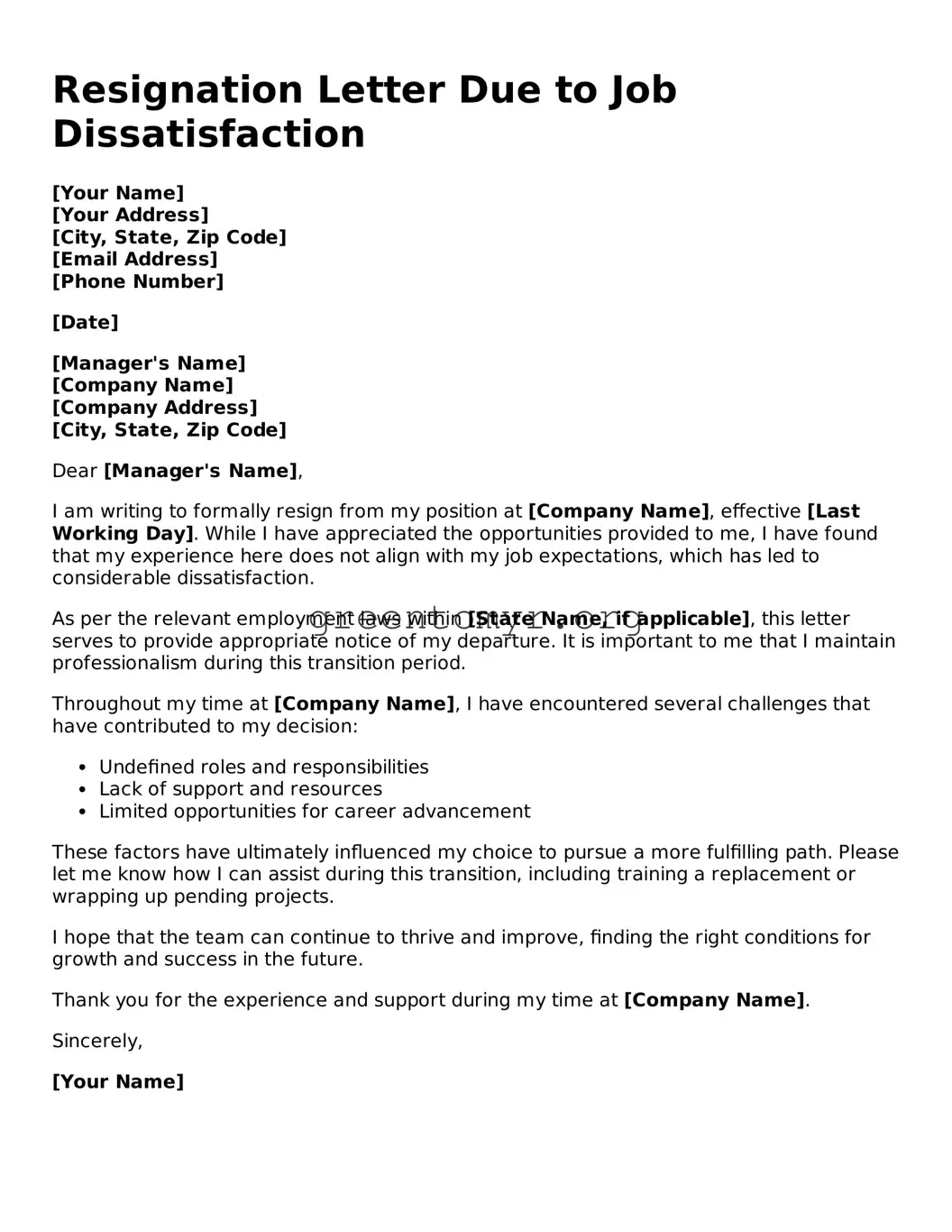Resignation Letter Due to Job Dissatisfaction
[Your Name]
[Your Address]
[City, State, Zip Code]
[Email Address]
[Phone Number]
[Date]
[Manager's Name]
[Company Name]
[Company Address]
[City, State, Zip Code]
Dear [Manager's Name],
I am writing to formally resign from my position at [Company Name], effective [Last Working Day]. While I have appreciated the opportunities provided to me, I have found that my experience here does not align with my job expectations, which has led to considerable dissatisfaction.
As per the relevant employment laws within [State Name, if applicable], this letter serves to provide appropriate notice of my departure. It is important to me that I maintain professionalism during this transition period.
Throughout my time at [Company Name], I have encountered several challenges that have contributed to my decision:
- Undefined roles and responsibilities
- Lack of support and resources
- Limited opportunities for career advancement
These factors have ultimately influenced my choice to pursue a more fulfilling path. Please let me know how I can assist during this transition, including training a replacement or wrapping up pending projects.
I hope that the team can continue to thrive and improve, finding the right conditions for growth and success in the future.
Thank you for the experience and support during my time at [Company Name].
Sincerely,
[Your Name]
